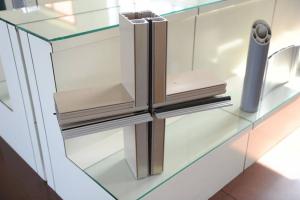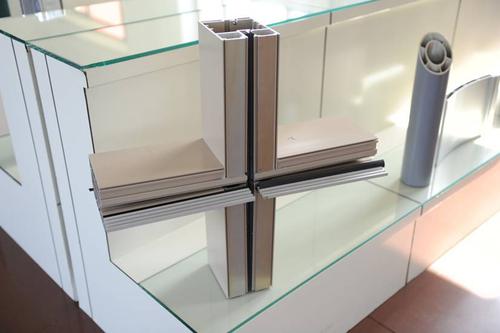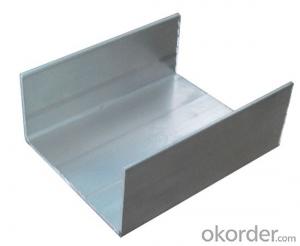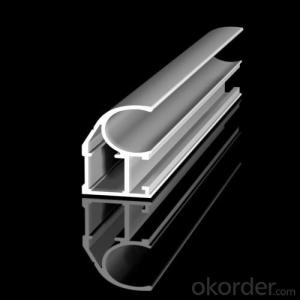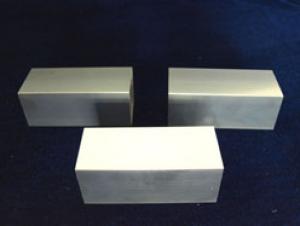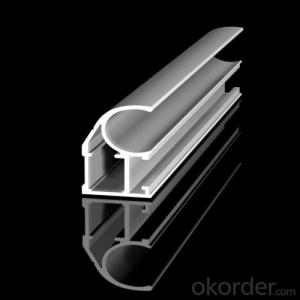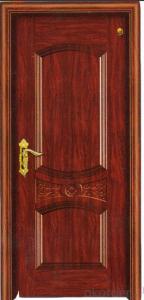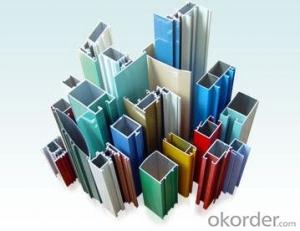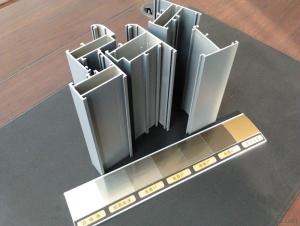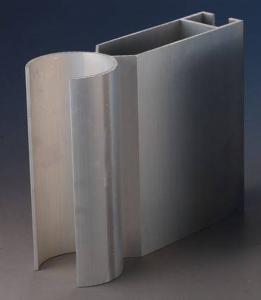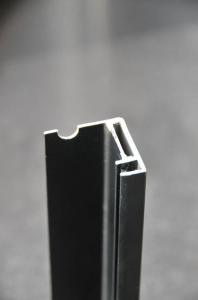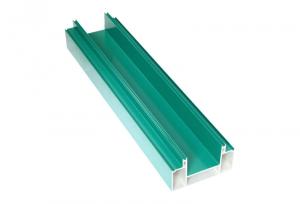Wholesale Anodized Aluminum Profiles for Window and Door
- Loading Port:
- China Main Port
- Payment Terms:
- TT OR LC
- Min Order Qty:
- -
- Supply Capability:
- -
OKorder Service Pledge
OKorder Financial Service
You Might Also Like
Specification:
1. Alu Alloy: 6063, 6061, 6005
2. State: T5/T6
3. Length: 1m-7m
4. Normal Anodizing thickness: 8-12 micro
5. Normal powder coating thickness: 80-120 micro
6. Tensile strength: ≥ 160 mpa
7. Yield strength: ≥ 110 mpa
8. Extensibility: ≥ 8%
9. Hardness(HW):8-14HW
Packing:
EPE Fram, Shrink film, Composite paper + Kraft paper
Aluminum profile application:
1. Industrial profiles;
2. Decoration/Furniture profiles;
3.Construction/Building profiles,Aluminum Pipes and tubes;
4. Door&Window profiles;
5. Curtain Wall profiles;
6. Aluminum Heat Sink;
7. Aluminum Angle/Channels;
8. LED panel etc.
Strong resistance corrosion property, effectively prevent acid, alkali, and salt etc.
Smooth and subtle, vivid, bright, and magnificent appearance
Alloy: 6063
Finish: anodizing, electrophoretic coating, powder coating, wood effect etc according to customers’ need
Standard package: suitable for long ocean transporting
OEM&ODM is welcome
Last for life time
- Q: What is the aluminum section table?
- Aluminum frame is used to do the frame, console ah. Jing Teng aluminum professional undertake assembly line workbench ~!
- Q: What are the dimensions and sizes of aluminum profiles?
- The dimensions and sizes of aluminum profiles can vary greatly depending on their intended use and design. They can range from small and narrow profiles, such as 10mm x 10mm square tubes, to larger and wider profiles, such as 100mm x 100mm square tubes. Additionally, aluminum profiles can come in various shapes, including square, rectangular, round, and custom shapes, to accommodate different applications and structural requirements. It is important to consult specific product catalogs or manufacturers for precise dimensions and sizes of aluminum profiles.
- Q: This question asks if aluminum profiles can be utilized for the purpose of exterior wall insulation.
- <p>Yes, aluminum profiles can be used for exterior wall insulation. They are often used as a component in various insulation systems due to their durability, lightweight, and resistance to corrosion. Aluminum profiles provide a structural framework that can support insulation materials like mineral wool or polystyrene boards. They also facilitate the attachment of cladding, which can enhance the building's energy efficiency and weather resistance. However, it's important to ensure proper installation and compatibility with other materials in the insulation system to achieve optimal thermal performance.</p>
- Q: This question asks about the methods to ensure that aluminum profiles used in construction meet safety standards.
- <p>To ensure that aluminum profiles used in building construction meet safety standards, you should follow these steps: 1) Source from reputable suppliers who adhere to industry standards. 2) Check for certifications such as ISO 9001 for quality management. 3) Verify the aluminum's grade and alloy type to ensure it's suitable for construction use. 4) Conduct regular inspections and tests, including tensile strength and load-bearing capacity tests. 5) Adhere to local building codes and regulations. 6) Use profiles with appropriate thickness and dimensions for the intended application. 7) Consult with engineers or architects to ensure proper design and installation. 8) Keep records of all tests and inspections for future reference and compliance checks.</p>
- Q: Can aluminum profiles be used for exhibition booths?
- Yes, aluminum profiles can be commonly used for exhibition booths. Aluminum profiles are lightweight, durable, and easy to assemble, making them an ideal choice for constructing exhibition booths. Additionally, aluminum profiles offer flexibility in design and can be customized to suit specific requirements, making them a popular choice in the exhibition industry.
- Q: What are the different assembly options available for aluminum profiles?
- There are several assembly options available for aluminum profiles, depending on the specific requirements and applications. Some of the common assembly methods include: 1. Mechanical Fastening: This involves using screws, bolts, or rivets to join two or more aluminum profiles together. Mechanical fastening provides a strong and secure connection and is suitable for applications that require frequent disassembly or adjustment. 2. Welding: Aluminum profiles can be welded together using various welding techniques such as TIG (Tungsten Inert Gas) welding or MIG (Metal Inert Gas) welding. Welding provides a seamless and strong joint, making it ideal for applications that require maximum strength and rigidity. 3. Adhesive Bonding: Adhesive bonding involves using adhesives or glues to join aluminum profiles together. This method is suitable for lightweight applications or where aesthetics are important, as it provides a clean and seamless appearance without visible fasteners. However, adhesive bonding may not be as strong as mechanical fastening or welding. 4. Slotting and Connecting Elements: Aluminum profiles often have T-slot designs that allow the use of various connecting elements such as T-nuts, connectors, and brackets. These elements can be easily inserted into the slots and tightened to create a secure and adjustable joint. This method is particularly useful for applications that require flexibility and easy reconfiguration. 5. Corner Brackets: Corner brackets are specifically designed to connect aluminum profiles at right angles. These brackets can be easily attached using screws or bolts and provide a strong and rigid joint. Corner brackets are commonly used in frame construction or for creating corners in structural applications. 6. Interlocking Systems: Some aluminum profiles feature interlocking systems that allow them to be connected without the need for additional fasteners or connectors. These systems use specially designed shapes or grooves that fit together, providing a secure connection. Interlocking systems are often used in modular structures or systems that require quick assembly and disassembly. Overall, the choice of assembly method for aluminum profiles depends on factors such as strength requirements, aesthetics, ease of assembly, and the specific application or industry. It is important to carefully consider these factors to select the most suitable assembly option for a given project.
- Q: This question asks for guidance on selecting the appropriate size and shape of aluminum profiles for a specific application.
- <p>Choosing the right size and shape of an aluminum profile involves several steps. First, consider the load-bearing requirements and structural integrity needed for your application. Consult with engineering standards or use software that can simulate the stress and load on the profile. Second, consider the aesthetic and functional requirements, such as the profile's visibility and the need for specific features like slots or holes. Third, review the available profiles from suppliers, matching your needs with their offerings. Finally, prototype with the selected profile to ensure it meets all requirements before full-scale production. Always consult with aluminum profile manufacturers or suppliers for their expertise and recommendations.</p>
- Q: What do you mean by "80868 fingers" of aluminum alloy door and window?
- Model bar, just like stainless steel 304, which is defined as the amount of metal.
- Q: What are the limitations of using aluminum profiles?
- There are several limitations to consider when using aluminum profiles in various applications. Firstly, aluminum profiles may not be suitable for heavy-duty or high-stress applications. While aluminum is a lightweight material, it may not possess the same level of strength and rigidity as other metals such as steel. Thus, it may not be able to withstand heavy loads or extreme forces. Secondly, aluminum profiles are susceptible to corrosion. Although aluminum has natural corrosion resistance due to the formation of a protective oxide layer, it can still be affected by certain environments, especially those with high levels of moisture or chemicals. This can lead to the deterioration of the profiles over time, compromising their structural integrity. Another limitation is the relatively low melting point of aluminum. Compared to other metals, aluminum has a lower melting point, making it more susceptible to heat damage. In applications where high temperatures are involved, such as in certain industrial processes, aluminum profiles may not be the most suitable choice. Furthermore, aluminum profiles may have limited design flexibility compared to other materials. While aluminum can be extruded into various shapes and sizes, it may not offer the same level of customization as materials like steel. This can be a constraint when trying to achieve complex or intricate designs. Lastly, cost can also be a limitation when using aluminum profiles. Although aluminum is a widely available and cost-effective material, it may not be the most economical choice for certain applications. In cases where higher strength or specialized properties are required, alternative materials may be more cost-efficient. Overall, while aluminum profiles offer numerous advantages such as lightweight, corrosion resistance, and affordability, it is important to consider these limitations before choosing them for specific applications. Assessing the load requirements, environmental conditions, design constraints, and budgetary considerations will help determine if aluminum profiles are the most suitable option.
- Q: What are the various standards and regulations governing the use of aluminum profiles in construction?
- <p>Aluminum profiles in construction are governed by a variety of standards and regulations that ensure their quality, safety, and performance. These include ISO standards such as ISO 7039 for anodized aluminum and ISO 9001 for quality management systems. National standards like ASTM B221 in the USA and EN 755 in Europe specify mechanical properties and chemical composition. Building codes such as the International Building Code (IBC) and Eurocode 9 also provide guidelines for the use of aluminum in construction. Additionally, there are specific regulations for fire resistance, sustainability, and environmental impact, like the European CE marking for construction products. Compliance with these standards is crucial for manufacturers and builders to ensure the reliability and safety of aluminum profiles used in construction projects.</p>
Send your message to us
Wholesale Anodized Aluminum Profiles for Window and Door
- Loading Port:
- China Main Port
- Payment Terms:
- TT OR LC
- Min Order Qty:
- -
- Supply Capability:
- -
OKorder Service Pledge
OKorder Financial Service
Similar products
Hot products
Hot Searches
Related keywords
